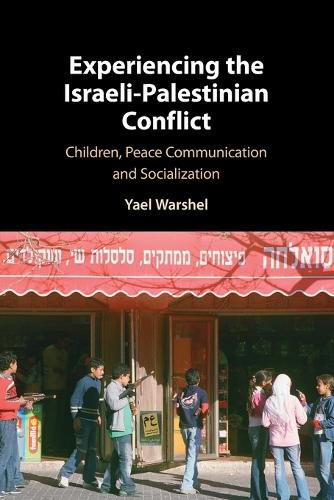Readings Newsletter
Become a Readings Member to make your shopping experience even easier.
Sign in or sign up for free!
You’re not far away from qualifying for FREE standard shipping within Australia
You’ve qualified for FREE standard shipping within Australia
The cart is loading…






Over the last eighty years there has been a global rise in ‘peace communication’ practice, the use of interpersonal and mass communication interventions to mediate between peoples engaged in political conflict. In this study, Yael Warshel assesses Israeli and Palestinian versions of Sesame Street, which targeted negative inter-group attitudes and stereotypes. Merging communication, peace and conflict studies, social psychology, anthropology, political science, education, Middle Eastern and childhood studies, this book provides a template to think about how audiences receive, interpret, use and are influenced by peace communication. By picking apart the text and subtext of the kind of media these specific audiences of children consume, Warshel examines how they interpret peace communication interventions, are socialized into Palestinians, Jewish Israelis and Arab/Palestinian Israelis, the political opinions they express and the violence they reproduce. She questions whether peace communication practices have any relevant structural impact on their audiences, critiques such interventions and offers recommendations for improving future communication interventions into political conflict worldwide.
$9.00 standard shipping within Australia
FREE standard shipping within Australia for orders over $100.00
Express & International shipping calculated at checkout
Over the last eighty years there has been a global rise in ‘peace communication’ practice, the use of interpersonal and mass communication interventions to mediate between peoples engaged in political conflict. In this study, Yael Warshel assesses Israeli and Palestinian versions of Sesame Street, which targeted negative inter-group attitudes and stereotypes. Merging communication, peace and conflict studies, social psychology, anthropology, political science, education, Middle Eastern and childhood studies, this book provides a template to think about how audiences receive, interpret, use and are influenced by peace communication. By picking apart the text and subtext of the kind of media these specific audiences of children consume, Warshel examines how they interpret peace communication interventions, are socialized into Palestinians, Jewish Israelis and Arab/Palestinian Israelis, the political opinions they express and the violence they reproduce. She questions whether peace communication practices have any relevant structural impact on their audiences, critiques such interventions and offers recommendations for improving future communication interventions into political conflict worldwide.